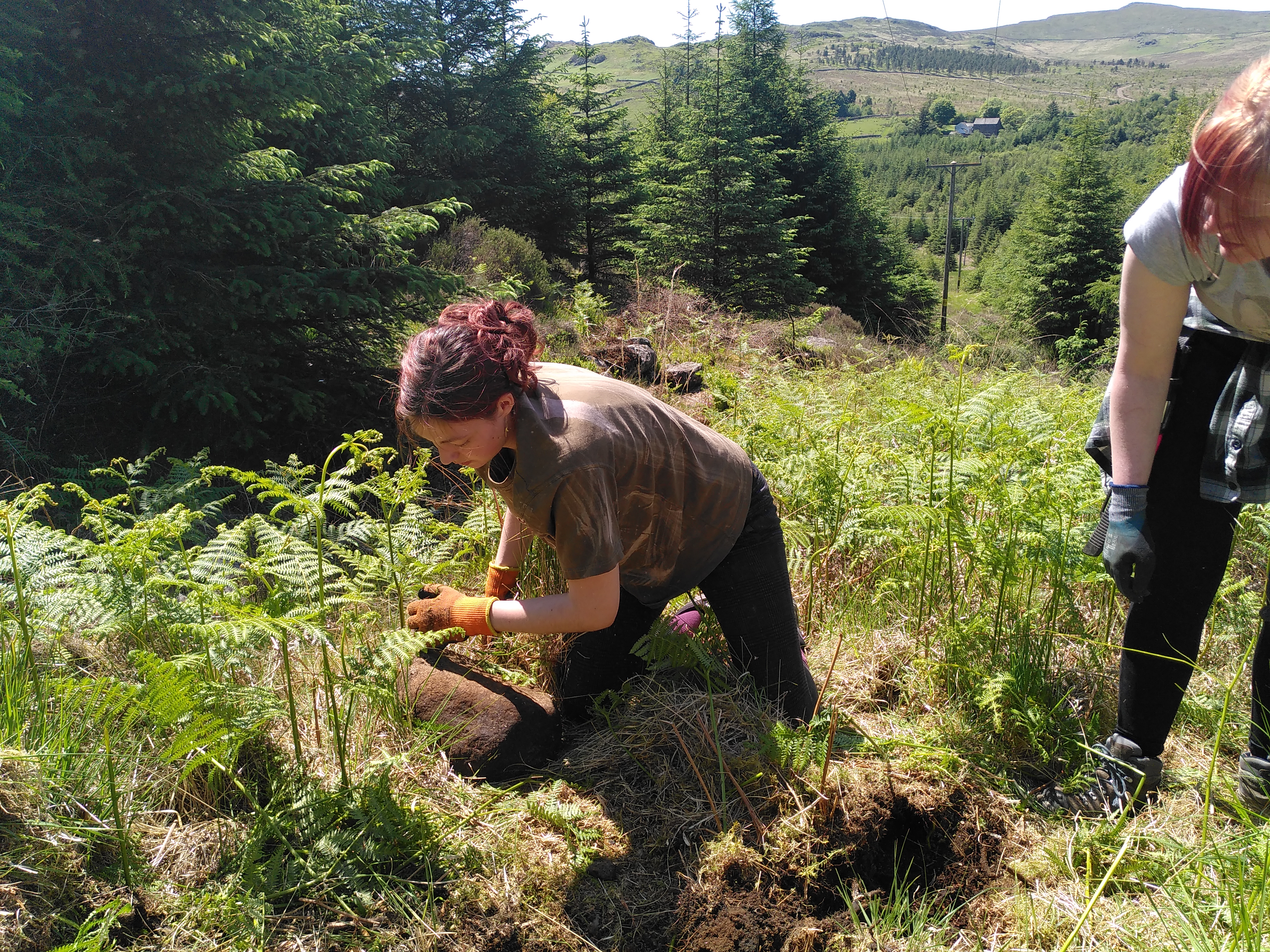
BLOG: A Student's Perspective on Bringing Britain's Nature Back

This blog has been written by Nerinea Klebs, a first-year Undergraduate student studying for a degree in Animal Behaviour and Wildlife Conservation at the University of Wolverhampton.
A group of students recently visited the Lake District, England's largest National Park and UNESCO World Heritage Site, on a field course to assist with habitat management. They constructed two hibernacula, shelters for animals to hibernate in during winter, for adders, but which will likely be used by other species, for example, common lizards and small mammals.
Bringing Britain’s Nature Back
The British countryside is facing an environmental crisis, however, all is not lost and a prime example for bringing Britain’s nature back is the restoration project of Hardknott Forest in Cumbria. For 20 years, the 360-hectare conifer plantation has been transformed back to native habitats.
But how is the area restored? John Hodgson from the Hardknott Forest Restoration Project suggests “If possible, the intervention is minimal!”
Native trees such as oak, birch and willow are allowed to naturally regenerate following removal of plantation trees. Oak trees alone are known as the most biodiverse trees, supporting 600 - 2,000 different species.
The removal of non-native trees, monitoring of wildlife, planting of some native species and the collection and propagation of seeds aid the natural processes. This management strategy supports rare species such as dormice, otters, adders, wood ants, great spotted woodpeckers, jays and bullfinches. Additionally, the area is partially fenced off, to avoid grazing which protects the vegetation.
Forestry England, the John Muir Trust, local residents and volunteers from further afield, including students like us, have played a huge part in the regeneration process.
The hibernacula were created by firstly digging a two-metre wide and a one-metre deep hole. Branches of cut invasive tree trunks from non-native Sitka spruce were removed. The bottom of the hole was covered with brash, which produces heat when it decays. Afterwards, longer logs were piled on top and rocks were placed on the sides. These function as space holders, allowing the adders to enter the hibernaculum.
This was covered with brash, turf, and soil on the top, functioning as insulation.
Having the opportunity to actively see the site and participate in the project allows students to find out what they are passionate about and gives insight into possible future career paths. It is a fantastic way to meet like-minded people, learn from experts, build a network and form deeper bonds with one’s peers.
Seeing the successful restoration in person is highly motivating to perform well academically, since the completion of a degree opens the door for a career in wildlife conservation.
Particularly in this project, students were taught more about native flora and fauna restoration, as well as actively improving and enriching the habitat. Undertaking this kind of physical work is highly rewarding, as one is actively giving back to nature, supporting rare species.
This adds a lot to one’s personal studies as the fieldwork provides unique experiences and the acquisition of important skills for employment.
Combining all the above through a myriad of fieldtrips is what makes studying the course Animal Behaviour and Wildlife Conservation at the University of Wolverhampton a truly unique experience.
If you want to learn more, take a look at this web page or find @HardknottForest on Twitter, Facebook, or Instagram.
Anyone interested in courses being offered should check out the website or register for one of our forthcoming Open Days.
ENDS
For more information please contact the Corporate Communications Team.


/prod01/wlvacuk/media/departments/digital-content-and-communications/images-2024/Diane-Spencer-(Teaser-image).jpg)
/prod01/wlvacuk/media/departments/digital-content-and-communications/images-18-19/220325-Engineers_teach_thumbail.jpg)
/prod01/wlvacuk/media/departments/digital-content-and-communications/images-2024/240509-Menopause-Research-Resized.jpg)
/prod01/wlvacuk/media/departments/digital-content-and-communications/images/Maria-Serria-(teaser-image).jpg)
/prod01/wlvacuk/media/departments/digital-content-and-communications/images-2024/241014-Cyber4ME-Project-Resized.jpg)
/prod01/wlvacuk/media/departments/digital-content-and-communications/images-2024/240315-Research-Resized.jpg)
/prod01/wlvacuk/media/departments/digital-content-and-communications/images-2024/BDA-group-photo.jpg)

